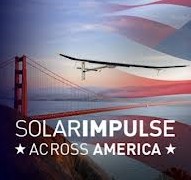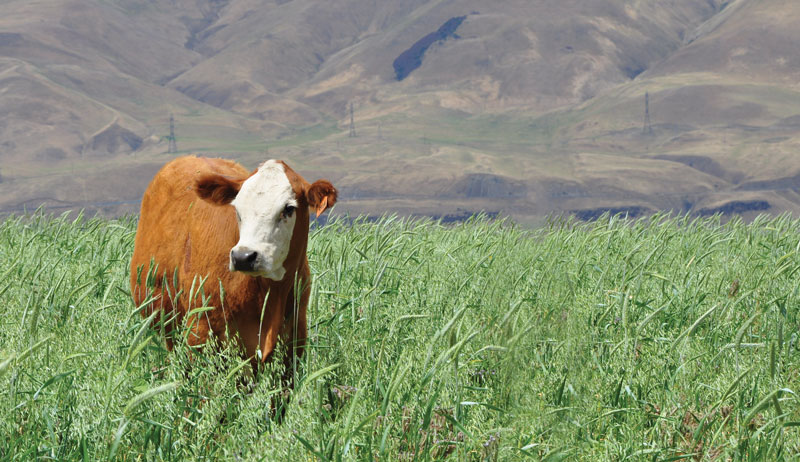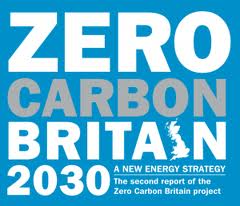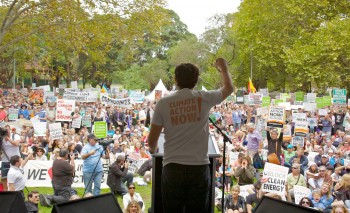Bertrand Piccard and Andre Borschberg had a vision to create an airplane that needed no fossil fuel. After 12 year’s hard work, their solar-powered plane is ready for a flight across America.
Pioneering Spirit
Bertrand Piccard has the genes for adventure. His grandfather flew to great heights in a pressurized cabin suspended from a hot air balloon. His father sunk to record-breaking ocean depths in a submarine. And Bertrand flew non-stop around the world in a hot air balloon.
Andre Borschberg began his career in the Swiss Air force as a fighter pilot. He then trained as an engineer and later studied Management Science at MIT. He has launched two successful start-up companies in new technologies.
These two men came together with a common goal: to create a plane powered entirely by the sun. They saw it as a ‘beautiful ambassador for renewable energy’ that would inspire the world.
Last night, Bertrand and Andre presented their vision at Stanford University.
Solar Impulse Dream
Bertrand spoke of the dream behind the Solar Impulse. He sees that many people are resistant to change and unwilling to leave their comfort zones. He wants us to learn to love the unknown and be reactive to change.
A hot air balloon can only be controlled by dropping weights to go higher and find different winds. He believes that ‘in the winds of life, we must drop our certainties overboard and try another direction’. Innovation comes from freedom to think in every direction.
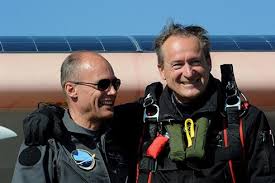 Solar Impulse Team
Solar Impulse Team
Andre and Bertrand had no money, no experience of building aircraft and no team.
They built a team of 80 using their network of contacts. This team came from many backgrounds; aeronautical engineers, boat builders, solar specialists, weathermen and computer geeks. A gardener who built model aircraft as a hobby became one of the most valuable team members. He is now the head maintenance man on the team.
Andre brought together a team of aggressive innovators balanced with the more conservative minded. When the balance tipped too far to aggression, the plane’s wing broke under a stress-test.
The Solar Impulse is entirely funded by private companies, with only one being an aviation-related company. Each sponsor provided money but also different areas of expertise to move the dream forward.
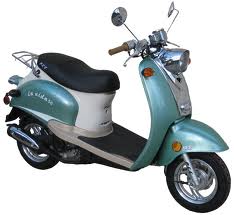 Technical Challenges
Technical Challenges
The plane has wings as wide as a jumbo jet that hold 2,000 square feet of solar cells. This provides the power of just one scooter! The challenge was to reduce energy consumption drastically and make energy collection as efficient as possible.
A boat building firm created the carbon fiber skeleton of the solar plane. They reduced the weight of the fiber from 90g per square meter to just 25g.
The solar cells are standard Sunpower cells but much thinner to bend better. These cells float on the wing structure so that the stresses of the wings in flight are not transferred to the cells.
The team reduced the weight of the wings by half and created a solar plane that weighed about the same as a small car.
The solar cells collect the sun’s energy during the day. As night falls, the plane climbs high and initially uses the potential energy from descending. When cruising altitude is reached, the plane flies on the solar power stored in its batteries.
The First Flights
After six years of hard work, the first test flight of mile at meter high took place. In July 2010, Andre flew the solar plane for 26 hours non-stop. The Solar Impulse became the first solar plane to fly at night.
After flights across Switzerland, the solar plane flew to Paris as the guest of honor at Paris-Le Bourget. 150,000 people visited the Solar Impulse display.
The solar plane then flew to Morocco at the invitation of the King. This event broke more world records and helped promote the building of the world’s biggest solar plant in Morocco.
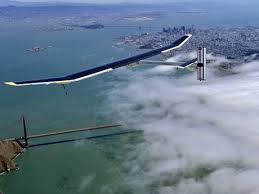 Solar Impulse across America
Solar Impulse across America
The Solar Impulse plane is temporarily based at NASA’s Moffett Field airport in Mountain View. This week, they tested the plane with a flight around the Bay Area and above the Golden Gate Bridge. The next step is a flight across America from San Francisco to New York, stopping at Phoenix, Dallas, St Louis and Washington along the way.
Join in the Challenge and follow Solar Impulse across America.
Solar Impulse around the World
The team is building a new solar plane in Switzerland. This plane is set to fly around the world in 2015. The idea is to captivate the world with this adventure of the human spirit. And to inspire us all to use clean energy to help save the planet for future generations.
The Solar Impulse team has opened the door as pioneers of solar aviation. Can they see a commercial airline as a future possibility? Bertrand replied ‘it is crazy to say it is possible but stupid to say it is impossible’. Each leap forward in aviation history has happened after 24 and a half years, so maybe we will see a solar passenger plane in 2034.

